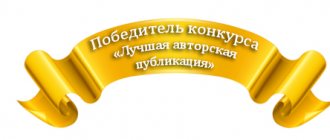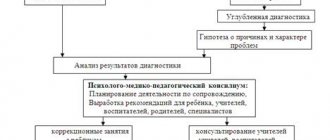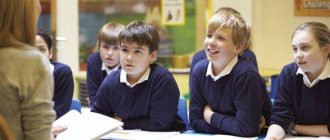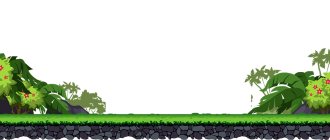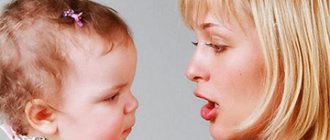The purpose and objectives of speech therapy work in preschool educational institutions
Currently, there is a closure of speech therapy centers in preschool educational institutions that carry out speech therapy work with children to eliminate speech disorders in preschool children.
The closure of the points provoked the emergence of a problem related to the fact that it is not possible to enroll preschool children en masse within the framework of preschool educational institutions. To solve this problem and ensure efficient spending of budget funds, speech therapy kindergartens are combined with general developmental kindergartens. This allows speech therapy work to be carried out by one speech therapist at several institutions simultaneously. That is, one specialist is assigned to 2-3 kindergartens, thereby creating a speech therapy center or speech therapy group on the basis of a preschool educational institution, where speech therapy work is carried out with children with speech disorders.
Are you an expert in this subject area? We invite you to become the author of the Directory Working Conditions
Note 1
The goal of speech therapy work in preschool educational institutions is the timely provision of correctional and developmental assistance to preschool children with various speech disorders.
Achieving this goal is carried out by solving the following tasks:
- Implementation of the necessary timely correction of speech disorders in preschool children.
- Prevention of violations of written and oral speech in preschool children.
- Development of voluntary attention to the sound side of speech.
- Promoting the need for speech therapy classes among preschool teachers and parents.
- Instilling in preschool children the desire to overcome existing speech deficiencies, creating a favorable emotional environment for correctional classes.
- Improving the methods of speech therapy work implemented in accordance with the needs and capabilities of children.
- Integration of education and upbringing of children in the implementation of specialized speech therapy assistance.
Finished works on a similar topic
Course work Organization of speech therapy work in a preschool institution 430 ₽ Abstract Organization of speech therapy work in a preschool institution 230 ₽ Examination Organization of speech therapy work in a preschool institution 230 ₽
Receive completed work or specialist advice on your educational project Find out the cost
Exercises that are easy to do at home
School classes are currently unavailable. Do you have homework from the speech therapist? If not, we'll give you some tips.
Exercises on sounds and vocabulary can be easily combined with household chores or will come in handy on the way to the dacha. Elements of competition increase interest, you don’t have to think about where to start a speech therapy session, just invite your child to play:
- In tongue twisters: who will repeat it cleaner and faster?
- In all honesty: who can come up with a funnier idea?
- In words with one letter or one syllable: who will remember more? What is around with this letter?
- In hide-and-seek words (where given sounds are hidden): who will make up more?
For dyslexia and dysgraphia, puzzles, lotto with syllables and words, the game “Word Maker”, fillwords (find words in a square filled with letters) will help - there are many ideas in this direction.
To develop coherent speech, make up stories based on pictures. It is recommended to listen to melodies and tell each other what you imagine when you hear a particular composition. Learn short poems and discuss their meaning.
Specifics of organizing speech therapy work in preschool educational institutions
The specifics of speech therapy work depend on the framework within which preschool educational institution it is implemented. Speech therapy work in a mass preschool educational institution is significantly different from work in a speech therapy preschool educational institution. First of all, this is due to the fact that speech therapy work in a speech kindergarten is carried out by a specialist and is integrated into the educational process, while in a mass preschool educational institution it goes in parallel and is carried out at a speech center.
Thus, speech therapy work in a mass kindergarten is additional, in contrast to a specialized kindergarten. There is no special time in the kindergarten schedule for classes with a speech therapist, so you have to carefully plan the schedule so that classes with a speech therapist are not conducted to the detriment of the educational program of the preschool educational institution.
The work of a speech therapist is based on taking into account the internal schedule of the preschool educational institution. The work schedule and schedule of classes drawn up by the speech therapist are approved by the methodologist and the head of the preschool educational institution.
In addition, we can highlight the following aspects of the specifics of organizing speech therapy work in preschool educational institutions:
- In the speech group, all children have equal speech impairments, which determine the speech therapist’s work program. At the speech center of a mass preschool educational institution, all children have various speech disorders (conclusion) and, accordingly, the work is structured individually.
- Currently, there is no correctional program to implement the full-fledged work of the logopunkt; the work is carried out on the basis of modern technologies and developments of various authors.
- The work of a speech therapist at a speech center, unlike a speech garden, is carried out in individual and subgroup classes. Lesson duration 15-20 minutes, 2-3 times a week.
- Speech therapy work at the speech center “wedges itself” into the educational process, children receive correctional help in portions, while in the speech kindergarten children receive help daily according to a specialized program.
The identification and enrollment of children in speech therapy classes is carried out through a psychological, medical and pedagogical commission (PMPC), which issues a speech report to the child and issues an official document to the parents and speech therapist.
The number of children attending a speech therapy center at the same time is determined by the types and degree of speech disorders. If there are a large number of children with severe disabilities, no more than 12 people can be included in the group. If children have mild speech impediments, classes can be conducted with 20 children at the same time.
The same requirements underlie the establishment of the terms of correctional work, the leading forms of organization and the frequency of classes of correctional speech work.
Article:
Recently, has increased . Therefore, it is important to identify dysfunctional speech development and overcome it as early as possible. Early age is unique and important for all subsequent mental, physical, speech and emotional development of the child.
The main directions of correctional and speech therapy work are :
• normalization of muscle tone and motor skills of the articulatory apparatus,
• development of tactile sensations,
• facial expressions,
• development of rhythmic breathing and movements of the child,
• stimulation of babbling, babbling words, translation of words from passive to active vocabulary,
• inducing a positive emotional attitude towards classes,
• development of memory , attention, thinking.
Correctional speech therapy work with children is built in stages and includes gradually more complex exercises. The speech therapist takes part in routine moments, which helps establish contact with children and increases the effectiveness of correctional work . Various sentences, okays, nursery rhymes for feeding, and poems on onomatopoeia are used. It is important to establish close contact with children and raise their emotional state.
Children learn to fix their gaze on the face of the speech therapist, on large, bright toys, and learn to follow first one-step and then two-step instructions. The work on developing general speech skills, especially diaphragmatic breathing, is of great importance With children, work on breathing is carried out in a playful way by imitation. We are working on a short, calm inhalation through the nose and a smooth exhalation. Breathing exercises: “Boats”, “Ball”, “Feather”, “Push the ball into the goal”, “Blow a drop off a cloud”, “Soap bubbles”, “Blow a leaf off a fungus” ", "Blow out the candle", etc.
To work on speech breathing with young children, speech imitations are used: A-A-A (a girl is crying, U-U-U (a steam locomotive is humming, I-I-I (a horse neighs, O-O-O (a bear growls) and etc. Continuing to work on speech breathing, we use the fusion of vowels: AU (children are screaming, UA (the baby is crying, IA (the donkey is screaming). Then we move on to working on syllables , first we practice open syllables - onomatopoeia: GA - GA (geese are screaming) , TU -TU (a train is traveling, then closed: AM-AM, TOP-TOP, then syllables with a combination of consonants: KVA-KVA. Imitation of animal voices: MEOW, MU, KVA, PI-PI, KO-KO. Imitation of sounds, produced by vehicles and various household objects: BEE-BE, DING-DING, KNOCK-KNOCK, TICK-TOCK Pronouncing simple words “give”, “na”, “go” and making short sentences with them.
The largest place in speech therapy work with children is occupied by work on stimulating speech activity. By drawing the child's attention to the sound of his voice, encouraging his activity, we try to cause repetition of sounds and babbling activity. The games “A doll came to visit”, “Aibolit”, “Who called?”, “What’s missing?”, “We are visiting” we create a game situation and encourage the baby to pronounce onomatopoeias and words. We are gradually making the game more difficult. Using a surprise moment, a toy appears from behind the screen, from a “wonderful” bag, from a dollhouse, encouraging the child to pronounce onomatopoeia and play with the toy.
We also conduct articulation gymnastics with children , both in passive and active forms. “Smile”, “Delicious jam”, “Fence”, “Horse”, “Spatula”, “Baby Elephant’s Trunk”.
The level of speech development is directly dependent on the degree of formation of fine movements of the fingers. Therefore, training the movements of the fingers and the entire hand is the most important factor stimulating the child’s speech development - finger gymnastics. With the help of poetic rhythm, pronunciation is improved, correct breathing is established, a certain rate of speech is practiced, and speech hearing is developed: “Magpie-crow”, “Ladushki”, “This finger is grandfather”, “This finger went into the forest”, etc. Children like finger toys games recorded on an audio disc with musical accompaniment “Chair”, “Bunny”, “Sunshine”, etc. Games with objects have a good effect: pyramids, cubes, mosaics, fastening with Velcro “Ladybug”, fastening buttons, pillow with buttons. Games with pencils, walnuts, cereals, sand, water, dough, plasticine, “Finger Pool”, “Finger Theater”, “Laces”, Seguin board, folding nesting dolls. We crumple paper, napkins, foam balls, rubber balls, and squeaky toys with our hands.
A promising technique is finger painting. In the process of drawing, orienting-search movements develop, the child learns to fix and hold an object in the field of vision. Drawing is accompanied by commentary on actions; emotional and speech stimuli are used in the form of nursery rhymes and poetic texts. Drawings: apple, duck, butterfly, Christmas tree, are selected for a specific lesson topic. In the course of joint activities, the child develops an active focus on interaction with an adult, primary communication skills, and encourages him to name the drawn object, using the speech means available to the child. We dip our palm in the paint and leave an imprint on a piece of paper, and the baby happily repeats everything we show him. We also draw with cork and sponge, resulting in printable drawings. Draw on a tray - scatter semolina or sand and draw lines with your finger. Then we take the child’s hand in ours and repeat the “drawing”: rain, stream, sun, path, grass, snow.
Using the example of simple exercises for the development of general motor skills - movements of the arms and legs, turning the head, bending the body, you can teach the child to listen and remember tasks, and then carry them out. We play together with the child: “Teddy bear”, “Tree in the wind”, “Bunny” the little gray one is sitting,” “Vova is stomping as best he can,” “Big feet were walking along the road.” While watching animals and birds, you can invite your child to repeat their movements - how a bear, a cat, a dog walks, a bunny, a frog jumps, birds fly.
Kids love games with musical accompaniment - E. Zheleznova’s CD “Development Games, Merry Logori.
An important point is the development of tactile sensitivity. Playing with brushes, stroking, shaking relaxes, and the child’s fingers open up; the bright color of the brush attracts the baby’s attention. We also use tactile tables and tactile paths “On a visit” in our work. Various surfaces - hard, soft, fluffy, smooth, rough, prickly, cold.
work great attention to massage of fingers and hands, Su-Jok therapy. Speech therapy massage on the face, self-massage, is carried out with the aim of normalizing the tone of the muscles of the articulatory apparatus. The movements are accompanied by classical music.
Ball games are accompanied by poetic text - the game becomes emotional and brings great pleasure to the child. In the early period of life, the leading type of activity of the child is object-based activity. Children learn to design, place cubes and bricks in a stable manner, learn to play with construction, understand the words “cube”, “brick”, “put”, “build”. They learn to make a “path”, “turret”, “bench for a bunny”, “bed for a doll”, “sofa for a bear”, “table”, “chair”, etc. We use different types of “inserts”. “Take out” - “put in”, “open” - “close” the box, lid, “remove” - “ put on ” the rings of the pyramid. “Roll the car, the ball”, “Rock the doll”, collect small objects with two fingers, take large objects and toys with the whole hand. This is how the accumulation of experience occurs, which the child cannot yet express in words, but he practically masters the reality around him, and this is very important.
Games are played with the child to develop auditory attention, auditory memory and phonemic hearing. Exercises with musical instruments - tambourine, bell, rattle, metallophone, drum “What sounds ?”, “Guess what I’m playing?”. Games with “sound boxes” filled with various contents (cereals, peas, beans, granulated sugar, etc.) Games with a metallophone - first we show how a melody is born, then the child composes his own music and shows his creative abilities. While walking, we invite the child to listen to various sounds: “What’s making noise?”, “What’s humming?”, “Who’s talking?”
Formation of ideas about the diagram of the body and face: exercises “Water, water!”, “Show me at the doll (bear, bunny)”, exercises at the mirror “Look, touch the eyes, forehead, nose, ears”, “Show me where my eyes are” , nose, forehead." The same exercises are carried out on a doll, a bear, or a picture.
It is useful to assemble pyramids with your child, focusing on color, shape and size. Cubes of different colors, “Multi-colored houses”, sticks, balls, geometric shapes, beads, cards made of colored paper. Objects of the same color and different shapes are used - the child must arrange the objects in different boxes. Exercises: arrange objects of the same color and shape, but different in size, into three boxes depending on the size, “For the big bunny - a large carrot, and for the small one. ?”, “This apple is big, and this one is smaller,” etc.
In the process of purposeful, systematic work with the child , it is possible to achieve positive dynamics in mental and speech development. As a result of classes, the child’s speech rises to the level of onomatopoeia, babbling and the first words, and the active vocabulary is enriched. The passive vocabulary increases, the baby can follow simple instructions, understands the word, and uses the pointing gesture. Visual and auditory attention improves. Fine motor skills and coordination of movements are improved. An idea of oneself, one’s body, and communication skills are formed (the ability to establish visual, emotional, verbal contact, to be understood, to navigate social situations).
What kind of vacation to provide
Provide the speech therapist with extended annual leave. Its duration depends on the type of educational organization and the population with which the speech therapist works. See the table for details.
Duration of leave for a speech therapist
| Type of organization | Who does the speech therapist conduct classes with? | Number of vacation days per year |
| Kindergarten | Ordinary children | 42 |
| Children with disabilities (together with or without ordinary children) | 56 | |
| School | Doesn't matter | 56 |
The legislation does not determine how to calculate leave for a speech therapist in a kindergarten if he does not always work with children with disabilities. Calculate vacation time for each year of work. If during this period the speech therapist worked with a child with disabilities, then provide the employee with 56 days of leave. There is no need to isolate the time of direct work with a student with disabilities and calculate vacation in proportion to this time. Otherwise, the State Tax Inspectorate may consider that you are worsening conditions for the employee.
Please note that a kindergarten speech therapist can increase his leave if he works with students who have a PMPK conclusion. Only in this case can they be considered children with disabilities.
Situation: does a speech therapist have the right to early retirement?
Yes, it has.
A speech therapist teacher is included in the list of positions in which work is counted toward the length of service for early retirement (Government Decree No. 781 of October 29, 2002). In this case, the position does not necessarily have to be called “teacher-speech therapist”; the employee can also work in the position of “speech therapist”. The main thing is that the speech therapist has worked for at least 25 years in institutions for children, then he will have the right to an old-age pension before he reaches retirement age (clause 19, part 1, article 30 of the Federal Law of December 28, 2013 No. 400-FZ) .
What salary should I set?
The salary of a speech therapist teacher depends on the amount of work and consists of three parts: salary (rate), compensation and incentive payments.
Salary
Calculate the salary of a speech therapist teacher taking into account the workload for the salary. The standard hours of teaching work for the salary of a speech therapist teacher is 20 hours per week (clause 2.3 of Appendix No. 1 to Order of the Ministry of Education and Science dated December 22, 2014 No. 1601). Calculate the load in astronomical hours without taking into account breaks, changes and dynamic pauses.
Fix the salary amount in the organization's remuneration system. Indicate that the position of a speech therapist teacher belongs to the 4th qualification level of the PKG for teaching positions. Enter the salary amount into the employment contract with the employee.
If the organization has many children who need the help of a speech therapist, and the specialist wants to increase his workload, then draw up an additional agreement. Pay for teaching work in excess of the standard hours in proportion to the actual time worked. Take the rate as a basis (note 4 to Appendix No. 1 to Order of the Ministry of Education and Science dated December 22, 2014 No. 1601). For example, if a speech therapist agrees to work not 20, but 25 hours a week, then divide the salary for the rate by 4 and pay this amount in addition to the basic salary.
Legal regulation of labor relations and personnel document flow in an educational organization
Compensation payments
Be sure to pay compensation payments established by law:
- for harmful conditions in the workplace based on the results of the special assessment;
- work in areas with special climatic conditions;
- working overtime, at night and on non-working days;
- industry specifics
Examples of industry specific features are given by the Ministry of Education and Science in letter No. VP-1992/02 dated December 29, 2017. For example, pay a speech therapist extra for managing a speech clinic, working with students and pupils with disabilities or those in need of long-term treatment, and working in an institution located in a rural area.
In the collective agreement and remuneration system, you can establish additional compensation payments - in addition to those established by law. Set the amounts of bonuses yourself in specific amounts or as a percentage of the rates and official salaries of teaching staff.
Incentive payments
Assign additional payments and incentive bonuses to the speech therapist in the form of one-time bonuses or regular payments. In the regulations on the remuneration system, establish indicators and criteria for assessing the effectiveness of a teacher’s activities.
